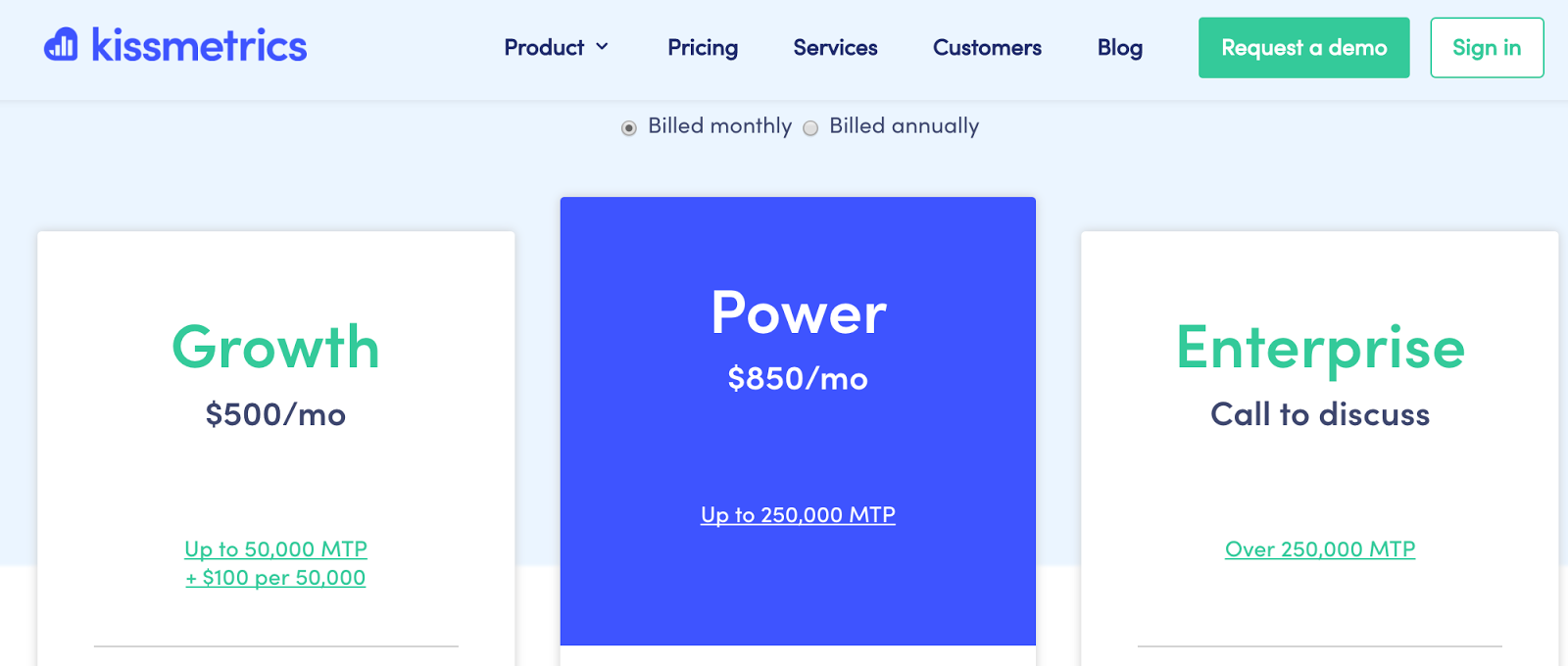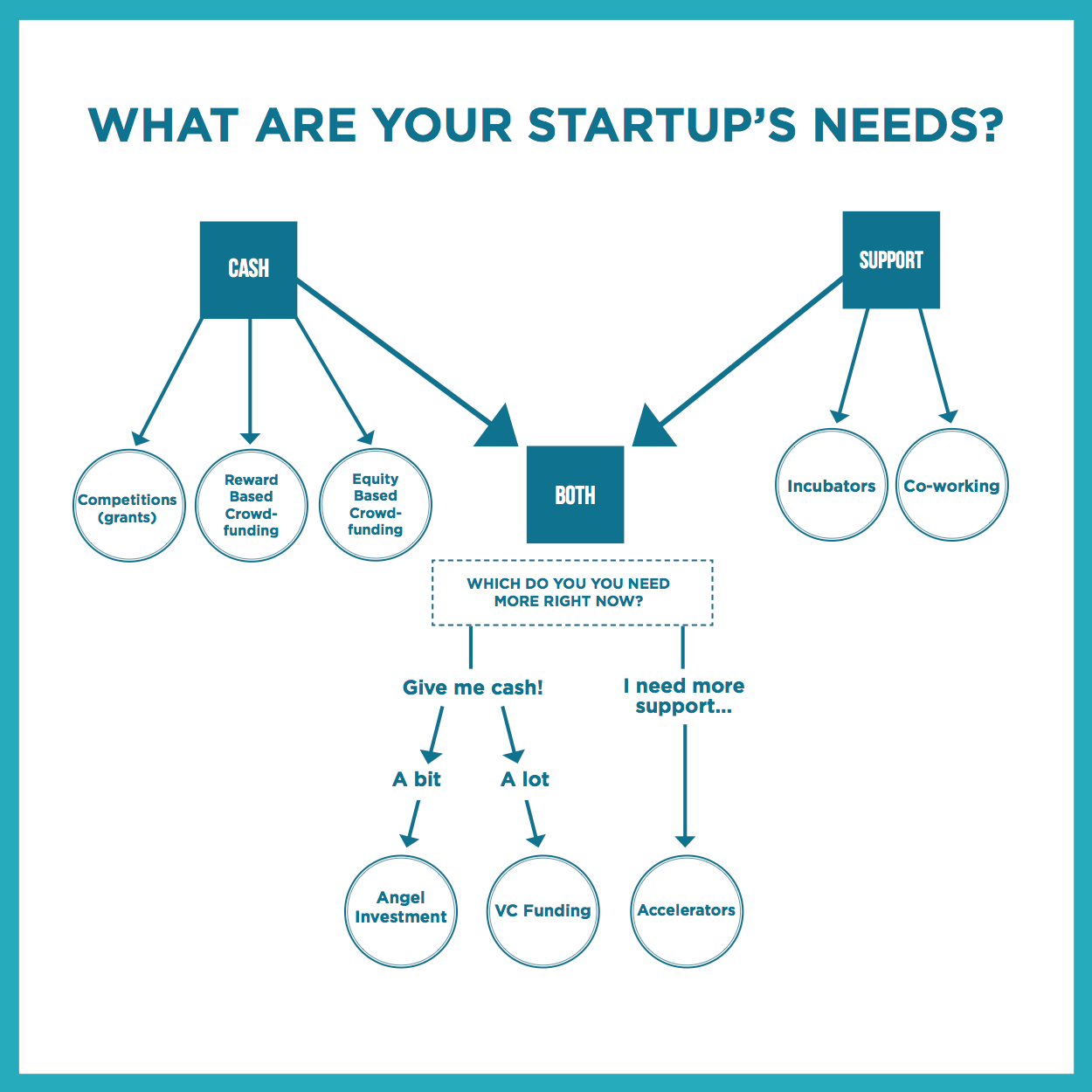Pitching your idea to a group of investors is incredibly nerve-wracking.
Trust me, I’ve been there.
It’s like the feeling of making a presentation at the front of the class in elementary school magnified by about a million.
You wonder if they’ll like your idea.
You wonder if they’ll like you.
Most of all, you wonder if they’re going to fund you or not.
For many startups, not getting funding is a death sentence. 13% of failed founders cited running out of funding as the reason they had to shut down.
Even if you have money in the bank, there’s going to come a point when you simply have to get additional funding to grow your startup and start scaling up.
I tried to get funding for Crazy Egg soon after creating it. I thought I could get $10 million for it.
No one wanted it.
That taught me a lot about what investors did want and how to position my companies for successful pitches in the future.
The result?
The creation of KISSmetrics, which we were able to secure over $19 million in funding for.
Read on to learn my top tips for pitching your idea or product to investors.
Nail your elevator speech
You need an elevator speech.
Your elevator speech is a 30 second or less summary of what you do. It should explain everything someone would need to know when they first meet you.
This should tell them everything they need to know even if they have no background knowledge about your company.
The goals of your elevator speech are to be able to succinctly describe your idea or product and get the other person interested enough to ask follow-up questions.
Here are the three main things your elevator speech needs to cover:
What you do.
Keep it short! This could be as simple as, “FakeCompany creates state-of-the-art analytics for…”
What problem you solve.
Again, keep it short, but be descriptive about what problem your product solves for its target customer.
For Crazy Egg, that might sound something like, “Crazy Egg allows businesses to see what’s working on their website, and what’s not, by using heatmap technology to track where visitors are looking and what they’re interacting with.”
Why you’re different.
Why should the person you’re talking to use your product or service over your competition?
Your product may have a feature no one else does, or maybe it’s just easier to use. Whatever your key differentiator is, you need to know it.
After your speech, make sure to connect with the person listening.
Ask them a question, respond to their follow up questions, but most importantly, stay in touch.
Growing your professional network should always be your goal as a founder. You never know who will provide your next funding source or opportunity.
Research your audience
Before doing your pitch, do some research on who you’ll be presenting to.
Good sources to find out about angel investors are AngelList, Flashfunders, and SeedInvest.
You can also look for angel networks that focus on the region you live in. Angel Capital Association has a good directory for location specific angel groups.
Some investors may be public figures that you can find out a lot about online. Many others prefer anonymity and it’s hard to find out any information about them.
If you can, try and find out their patterns.
Do they like to be involved in their investments or not?
Some investors choose companies they want to be involved with and want a seat at the boardroom table in exchange for their money.
Other investors would rather be hands-off and receive quarterly reports on profitability, but otherwise not be involved.
Investor Dave Anderson says it depends on how much help the company needs.
If you’re pitching to a room full of investors Shark Tank style, find out as much as you can about each one of them.
At the minimum, you should be able to answer:
- Do they know your industry?
- Do they have any other investments in your industry?
- What’s their personality like? Quiet and careful, or loud and volatile?
- Are they a new or seasoned investor?
- Do they belong to an angel investment network, or are they an individual investor?
- What companies did they start or come from before becoming an investor?
And, if they’ve done an interview outlining exactly what they’d like to hear like Jason Calacanis has, you should probably listen to that, too.
Use realistic data (and be able to back it up)
When you’re pitching to investors, you need to provide solid data.
Investors care about what you’ve already accomplished and how that can make them a profit in the future.
There are many ways to calculate the value of a startup, some of them more controversial than others.
This is because the value of a startup is often created before they’ve even made a profit. The numbers behind it are driven by speculation of how good the company could perform, hypothetically.
Some startups have higher valuations than their publicly traded peers. WeWork has a 525% higher valuation than established brick and mortar competitor Regus!
Investors want to hear the reasoning behind your numbers.
Don’t just say you’re acquiring new customers every month, say exactly how many. It doesn’t matter if you’re attracting 10 or 10,000, the fact that you’re giving real data shows you’re transparent.
Remember: An investor isn’t just giving your company money, they’re giving it to you.
They’re investing because they believe in you.
Make them confident in their decision by making data a key part of your pitch.
Chance Barnett, CEO of CrowdFunder, put together a pitch presentation template.
He advises founders to include market statistics early in the presentation to hook investors right away.
These are things like the market opportunity, current users and profit margins, or facts that support your cause, as Innovative Solar’s pitch deck lists.
Tell an engaging story
It’s no secret that storytelling sells.
Brands who effectively use storytelling in their marketing consistently outperform those who don’t, sometimes by up to 64%!
Your pitch should be no different.
If you’re given five minutes to present your idea to a group of investors, use it to tell a story and sprinkle in a few facts.
Use traditional storytelling methods to illustrate how your product works. Create a protagonist and an antagonist for your story.
The protagonist could be you if you’re talking about your own inspiration for starting your company. It could also be a made up example.
Here’s an example from my own experience pitching Hello Bar.
“I was trying out all these different strategies to get users to convert on my website, but I realized I was spending way too much time trying to change the code on my site to get them to work.
I knew there had to be an easier way.
So, I created Hello Bar. It allows anyone to place attractive, high-converting calls to action on their website, even if they have no coding experience. It’s all managed through their dashboard on HelloBar.com with a drag and drop editor.
It’s all managed through their dashboard on HelloBar.com with a drag and drop editor.
“Hello Bar makes converting users into customers easy and fast!”
I was the protagonist, time was the antagonist.
People will spend a lot of money to save time. Showcasing my business this way helps investors see the benefits of the product, even if they don’t understand how the tech works.
Have a documented succession plan
Investors want to hear your passion, but they also need to due diligence before forking over their money.
Wouldn’t you do the same?
Your startup should already have a solid business plan in place, but don’t overlook the importance of including a succession plan in there.
Companies who have used succession plans to pass on the torch to a new owner have 3x the revenue of ones who don’t.
Succession planning is all about reducing risk.
It means that in case anything happened to you, there is a documented procedure for who takes over control of the company.
It doesn’t have to just be for freak accidents. Succession plans are useful for long-term growth strategies, too.
Having one shows that you’ve thought well into the future and are committed to keeping it going, even when you’re not the one running it anymore.
Your plan should include these key components:
Who the successor will be.
This person may change over time, but you should name the person who will take over as CEO from you.
List their accomplishments, current role, and why they’re a great fit to take over.
An overlap or transition period.
Planning your business’ future isn’t like selling a car.
You can’t just sign on the dotted line, toss over the keys, and say, “She’s all yours now!”
It takes time to teach your protege the ropes.
You want to work closely with him or her prior to actually leaving the company to make the transition as smooth as possible.
How succession will affect your hiring strategy.
When you know who will be stepping in to fill senior roles, you know who you’ll need to hire next: people for the roles that were just vacated!
If your VP of Product Development is going to take over as CEO once the founder leaves, then you know you’ll need to be hunting for a new VP of Product Development ASAP.
It’s not rocket science, but writing it down is important. It shows you’re serious about growth and the future of your company.
That sends a strong message to investors.
Dress for success
Dress to impress for your presentation.
No, I’m not suggesting you go too far outside of your comfort zone. Just put in a little extra effort.
You’re meeting business people who probably spend a lot of time with people who dress for business. So dress for business!
Treat your pitch like a job interview.
Over 30% of people think a person is more trustworth, and better at their job if they’re dressed professionally.
There are different levels of professional dress codes, but it never hurts to be too formal for your pitch.
It definitely worked for me.
A few years ago, I ran an experiment.
I spent over $160,000 on clothes. It was hard for me to do as someone who previously lived out of old t-shirts and basketball shorts.
I bought well-fitting, designer clothes from big name designers. I looked good, but did it make me more successful?
I totaled up everything I earned from my new appearance and my initial $160k investment paid off in a big way.
I made $692,000 just from dressing better.
I tracked my close ratio for pitches for four years during this experiment. I didn’t change anything about my pitch, pricing, or services. I just looked better.
My closing ratio went from 25% to 40%. It was insane!
I had no idea that the expression, “Clothes make the man” was so true.
But it wasn’t just me.
My friend Mike tried this experiment, too. He spent about $10,000 on clothes, a much more realistic number (though still incredibly expensive!).
He immediately noticed a change in how people perceived him.
At networking events, people came right up to him and asked him what he did instead of him having to chase them down.
But he took it one step further.
He bought a Lamborghini. He didn’t keep it, but he tried using it for this experiment.
After posting this picture of himself on social media, Mike received 107 messages from business owners wanting his help.
He eventually worked with one of them, who paid him $50,000 for a short-term advisory job.
Now I’m not saying go out and spend money you don’t have on clothes or fancy cars.
That’s foolish and a recipe for bankruptcy.
I just mean pay attention to how you look. It’s unfortunate that our society is so concerned with appearance over substance, but the evidence doesn’t lie.
Put a little effort in with your appearance and it will pay off.
Especially when you’re surrounded by successful businesspeople in an investment presentation.
Look the part, get the funds.
Know your revenue model
A revenue model, or business model, just means how your company plans to make money and be profitable.
For example, here’s AirBNB’s revenue model.
It looks really simple. A good revenue model should be.
For software companies, your revenue model will likely be in the form of collecting subscriptions or one-time payment for users to download your software.
KISSmetrics has three pricing tiers that users can pay for monthly or annually.
Paying monthly makes it easy to cancel, but the user ends up paying more than they would had they bought a 1 year subscription up front.
Another way software companies earn revenue is through advertising.
Ad-based revenue models make the app free to use for consumers by displaying ads on it. Some apps offer a premium subscription to hide the ads.
This adds an additional revenue stream for the company.
Two of the largest examples of this are Google and Facebook.
Google allows users to search the web for free. It makes money when websites pay for ads to show those users.
It’s a very simple business model and it works well.
Google offers a few paid products, like G Suite, AdWords, and the Pixel phone.
Facebook, by comparison, offers no paid products and is almost 100% supported by ads.
Whatever revenue model you choose for your company, you need to know it inside out before you pitch to investors.
It’s one of the most important things they want to know.
Your business model should address market demand and how you’re going to attract customers.
It should also list any potential challenges, or when you might need additional funding.
Don’t be afraid to be honest about your company’s challenges.
The people in front of you are all successful business people which means they’ve failed more than a few times in their lives.
Being honest builds trust and credibility. Investors know how tough business is and they won’t trust someone who comes in and says, “I’ve got it all figured out!”
Because no one has it all figured out.
Conclusion
Pitching your idea to investors can be one of the scariest things you ever do as an entrepreneur.
Except for, you know, working for yourself and paying the bills while developing a life-changing idea you believe wholeheartedly in with no promise of future income.
For most companies, attracting investors becomes a necessity to either stay afloat or to grow.
At times you might need support and mentorship more than cash. Investors can often be your biggest mentors.
The key to a successful pitch is to be brief while still telling an engaging story about your company.
Keep your slides focused on numbers, and use your presentation time to verbally explain your story and value proposition.
Have a solid marketing plan for your startup to go along with your funding so that you’re ready to hit the ground running.
Be ready to answer tough questions from industry veterans.
The people you’re pitching to have their own success stories. Tailor your pitch to be about how you can help them expand their success, whether that’s financially or in a humanitarian way.
Practice your pitch.
Have a plan.
Dress nice!
And have fun.
Investors are looking for someone to believe in. Use your passion for your product to inspire them to take a chance on you.
Have you pitched an idea to investors before? What are your best tips for securing funding?


















Comments (6)